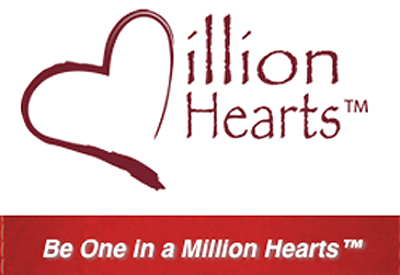Pharmacists are the latest recruits in the government’s push to reduce the nation’s risk of heart disease. The Department of Health and Human Services announced Wednesday that the Centers for Disease Control and Prevention has expanded its year-old Million Hearts initiative to fight not only heart attacks and strokes, but also the underlying cause of much of them: hypertension.
The latest government data about hypertension has experts on edge — findings indicate that of the 67 million Americans with high blood pressure, 36 million don’t have it under control, and uncontrolled blood pressure is driving care costs up, with direct costs totaling somewhere around $131 billion every year.
Million Hearts head Janet Wright and Surgeon General Regina Benjamin said the reason for looping in pharmacists is simple: they are in the community, and easily accessible. Panel participants, including Douglas Hoey, CEO of the National Community Pharmacists Association, said pharmacists could be particularly key in rural communities.
The Million Hearts initiative tries to give patients as many opportunities for health education as possible. In this case, the hypertension program, called Team Up Pressure Down seeks to encourage pharmacists to become more actively engaged with patients for whom high blood pressure is a concern. The goal is to reinforce best medication-taking practices and to pinpoint reasons patients may or may not be taking their prescriptions.
“We need pharmacists to team up with patients and move well beyond dissemination of materials. This is well beyond talk,” Wright said during Wednesday’s conference call.
To do this, the program has created three videos — two aimed at patients, one at doctors — about high blood pressure, as well as conversation tools and assessments such as the Pharmacist Drug Adherence Work-Up Tool which provides conversations prompts such as “please tell me how you take your medication every day” and “are you concerned that your medication is not helping you?” The worksheet provides a conversation roadmap that helps pharmacists find solutions, such recommending medication calendars if patients are missing doses. It also advises pharmacists to latch onto certain conversation cues that could help them hone in on what a patient considers important, and use that to promote better medication adherence.
The tools can be customized to include pharmacy logos.
The majority of the hypertension resources are printed materials and available in English. The most tech-friendly program component is a tool on the Million Hearts Facebook page, which helps patients understand what qualifies as a healthy blood pressure reading. Spokesperson Kathryn Harben told MM&M that apps are in the works – there’s currently a contest – and the winning app will be piloted in Chicago, Baltimore, San Diego, and Tulsa, OK.
These resources are in addition to an online CPE program created by the Collaborative Education Institute that teaches pharmacists about hypertension rates and adherence barriers.
All of this does come with a catch: pharmacists have to take their own adherence into consideration.
“It’s the old saying of ‘if you didn’t document it, it didn’t happen.. . so I strongly encourage everyone—if you’re really going to make the commitment . . . document everything you are doing” Hoey said.







